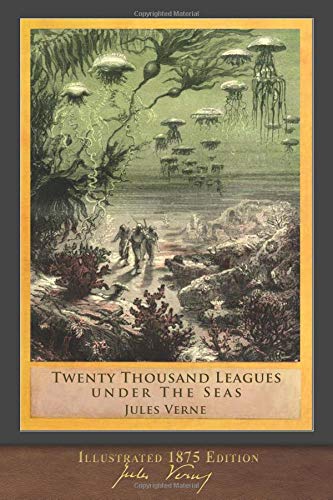


In all, the novel had a difficult gestation. Verne reworked its political content, devising new nationalities for Nemo and his great enemy-information revealed only in a later novel, The Mysterious Island (1875) in the present work Nemo's background remains a dark secret. Nemo builds a fabulous futuristic submarine, the Nautilus, then conducts an underwater campaign of vengeance against his imperialist oppressor.īut in the 1860s France had to treat the Tsar as an ally, and Verne's publisher, Pierre Hetzel, pronounced the book unprintable. As originally conceived, Verne's Captain Nemo was a Polish nobleman whose entire family had been slaughtered by Russian troops. The Poles were quashed with a violence that appalled not only Verne but all Europe. Initially, Verne's narrative was influenced by the 1863 uprising of Poland against Tsarist Russia. She praised Verne's two early novels Five Weeks in a Balloon (1863) and Journey to the Center of the Earth (1864), then added: "Soon I hope you'll take us into the ocean depths, your characters traveling in diving equipment perfected by your science and your imagination." Thus inspired, Verne created one of literature's great rebels, a freedom fighter who plunged beneath the waves to wage a unique form of guerilla warfare. But the specific stimulus for this novel was an 1865 fan letter from a fellow writer, Madame George Sand. First as a Paris stockbroker, later as a celebrated author and yachtsman, he went on frequent voyages-to Britain, America, the Mediterranean. 126 years later, a Time cover story on deep–sea exploration made much the same admission: "We know more about Mars than we know about the oceans." This reality begins to explain the dark power and otherworldly fascination of Twenty Thousand Leagues Under the Seas.īorn in the French river town of Nantes, Verne had a lifelong passion for the sea. Jules Verne (1828–1905) published the French equivalents of these words in 1869, and little has changed since. "What goes on in those distant depths? What creatures inhabit, or could inhabit, those regions twelve or fifteen miles beneath the surface of the water? It's almost beyond conjecture." "The deepest parts of the ocean are totally unknown to us," admits Professor Aronnax early in this novel. You should visit Browse Happy and update your internet browser today!

The embedded audio player requires a modern internet browser.


 0 kommentar(er)
0 kommentar(er)
